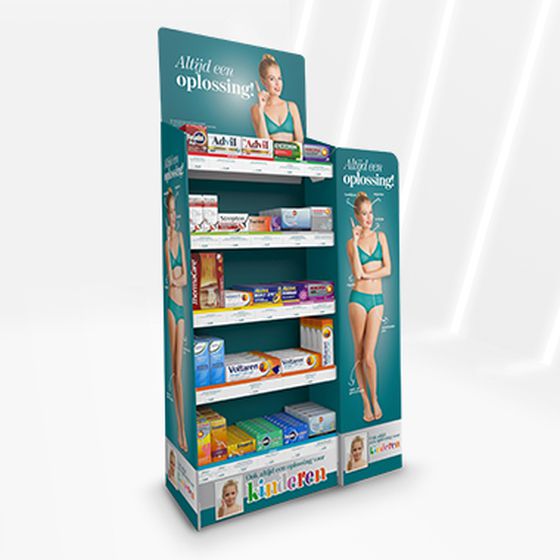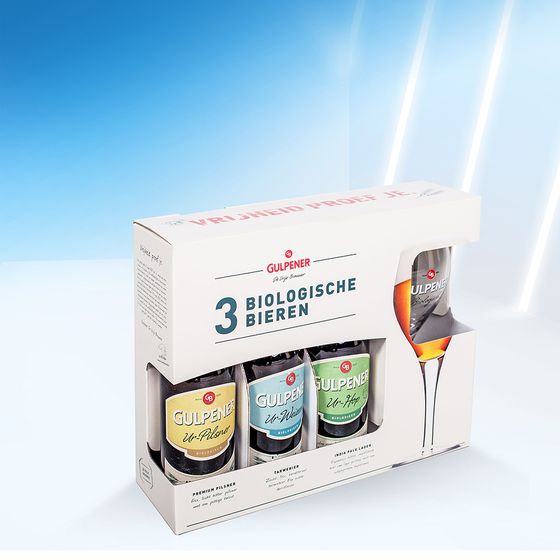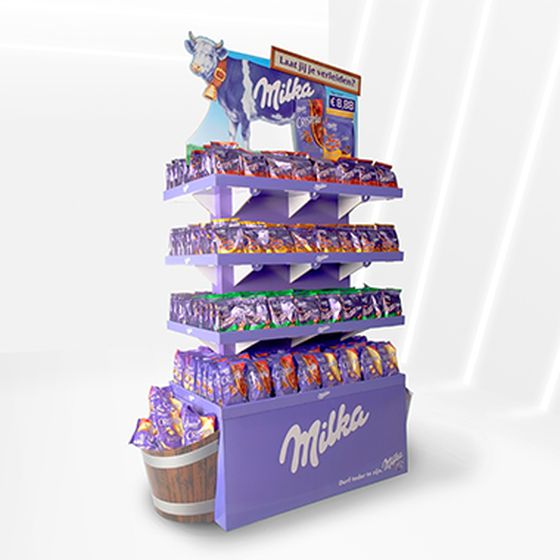Co-packing and the trend for secondary placements
Attractive, contemporary packaging of promotional products – with co-packing



At the point-of-sale (POS), presentation and exclusivity are key. Classic gift packs are no longer just a seasonal thing in retail - they are here all year round. Particularly eye-catching displays practically shout out "Pick me, pick me!" But how do these special editions, bonus packs, displays and gift sets come about anyway? Co-packing is the answer. However, it is usually not possible for manufacturers to manage secondary placements themselves, alongside their day-to-day business. They are not short of ideas, but it often simply means that their logistics and especially production and storage capabilities are exhausted. This is where companies like Schumacher Packaging Services come into play: As a full packaging service provider, we are offer everything from a single source - from planning to the complete on-pack promotional product.
Secondary placements: Win-win situation for customers and branded companies
The trend is moving inexorably towards secondary placements. Both retail and e-commerce are seeing more and more impulse purchases, or end consumers looking for an all-round carefree gift set. Besides the monetary aspects, special editions offer the customer desirable extras; for example, an unusual mug or other promotional goods. In addition, buyers also receive a product set, which is not only extremely appealing and gives the customer a sensory experience through the packaging alone, but it is also complete and ready to be gifted. Secondary placements also offer extensive benefits for the brand manufacturer - they attract greater attention to products and thereby increase sales at the POS. Furthermore, gift packs are an extremely powerful tool for building customer loyalty. Today's customers are always looking for limited-edition merchandise and must-haves. But even follow-up purchases of the original product can be increased through promotions with exclusive extras. After all, what would end consumers serve in branded glasses, for example? The original product, of course – follow-up purchases are almost guaranteed and a new fan to boot.
Co-packing makes it possible
It is cold and flu viruses are booming. A herbal tea manufacturer wants a secondary placement for his product and aims to motivate his customers to make a purchase by offering a branded knitted scarf alongside two select tea varieties, as a high-quality gift set. However, the manufacturer does not have free production or storage capacity; the company therefore seeks assistance from a full packaging service provider. The increasing demand for secondary placements of products puts manufacturers in a tight spot. There's much more to it than the idea itself. That's just the beginning of a complex process that extends from the initial concept to the packaging and right through to distribution. It requires perfectly coordinated logistics, increased storage space and, above all, additional work. However, the greatest challenge with a secondary placement lies in the interface between product, packaging and trade. It makes sense to manage this balancing act from one single source as this is the only way to keep an eye on everything and to quickly compensate for any failures.
Room for ideas
From the first contact right through to the delivered product, partly in elaborately designed displays, one thing is paramount in the packaging sector: Room for ideas – literally and figuratively. First comes the concept phase. Even at the packaging ideas stage, co-packers can use their extensive experience and to assist and spark creativity even at the packaging ideas stage. Whether it is on-pack products with a film window, carefully detailed displays in any conceivable configuration – nothing is impossible. The economic aspect must also be taken into consideration. Setting up sometimes rather unusual packaging and re-packing is generally carried out manually; the more unusual and complex the packaging style, the more time-consuming the construction and assembly. Starting with sophisticated ideas, packaging specialists supply everything from draft designs to the first sample packaging. They also select the materials to be used and take care of the design construction as well as the technical feasibility study.
More than just packaging
Co-packing demands outstanding logistical performance: Perfect timing – from the planning stage right through to Just-in-Time delivery. The delivery of the product, the on-pack product and specially designed packaging must be coordinated with careful precision. Just one delayed delivery disrupts the entire process. This can result in a stoppage in the packaging process, unused storage capacity, along with additional costs that are difficult to estimate. It may also result in the final delivery being delayed. When a special edition goes into production, everything must run in complete harmony; delivery, packaging of exact quantities, and final dispatch, to ensure the complete on-pack products or assembled displays are sent safely on their way. After all, the gift packs must be available simultaneously at all POS on a specific day.
Quality management included
The end result is seeing exclusive and high-quality products, along with associated limited edition add-on items, displayed at retail outlets. In order to achieve this standard of quality, co-packers also carry out quality checks, according to the acceptable quality limit (AQL), throughout the entire process. AQL spot checks are carried out particularly on incoming goods and outgoing goods, as it is essential that the quality standards of the manufacturer are upheld. The co-packing process makes sure that every component of the special edition undergoes full quality control testing; manual packing in itself ensures that each individual product is checked.
Partial automation and customisation
The attractive, secure packaging of products and give-away items will continue to be carried out by hand as, in most cases, a new on-pack product requires new packaging and a new display, in order to ensure it attracts attention at the POS. Machines could not do this with the necessary precision. Partial automation is beneficial for situations where the die, that is the shape of the packaging, remains identical and the printing is simply adapted to individual designs. The innovative digital printing technology currently offered by Schumacher Packaging is able to split industrial-sized batches of packaging and displays with identical structures into any number of partial series for the first time, from one sheet to several thousand. This modern mass-volume digital printing makes it possible to vary the print from sheet to sheet, as and when necessary, with different printed images, versions or barcodes. So, digital printing can further increase the attractiveness of special editions or gift sets. But whether it's with digital printing or without – one thing is certain: co-packing opens up brand new opportunities for manufacturers. It is a service with huge future potential.
Author: Michael Marquardt, CEO of Schumacher Packaging Services GmbH